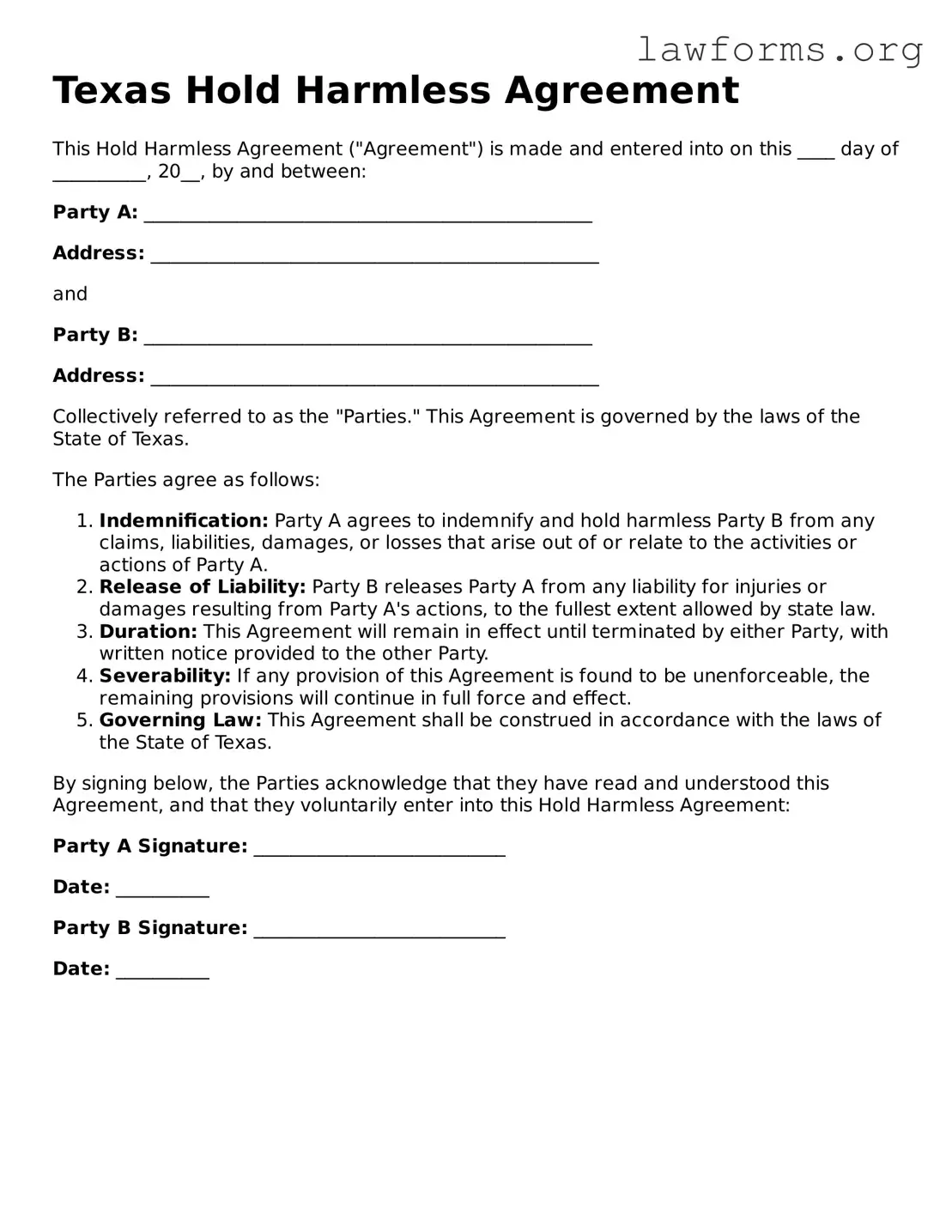Texas Hold Harmless Agreement
This Hold Harmless Agreement ("Agreement") is made and entered into on this ____ day of __________, 20__, by and between:
Party A: ________________________________________________
Address: ________________________________________________
and
Party B: ________________________________________________
Address: ________________________________________________
Collectively referred to as the "Parties." This Agreement is governed by the laws of the State of Texas.
The Parties agree as follows:
-
Indemnification: Party A agrees to indemnify and hold harmless Party B from any claims, liabilities, damages, or losses that arise out of or relate to the activities or actions of Party A.
-
Release of Liability: Party B releases Party A from any liability for injuries or damages resulting from Party A's actions, to the fullest extent allowed by state law.
-
Duration: This Agreement will remain in effect until terminated by either Party, with written notice provided to the other Party.
-
Severability: If any provision of this Agreement is found to be unenforceable, the remaining provisions will continue in full force and effect.
-
Governing Law: This Agreement shall be construed in accordance with the laws of the State of Texas.
By signing below, the Parties acknowledge that they have read and understood this Agreement, and that they voluntarily enter into this Hold Harmless Agreement:
Party A Signature: ___________________________
Date: __________
Party B Signature: ___________________________
Date: __________
